Greeting Top Future Tech Crew, when it comes to recording audio, having the right equipment can make a huge difference. An 8-channel audio interface is a super powerful tool that helps you capture high-quality sound. With eight input channels, you can easily connect multiple microphones, instruments, or other audio sources to your computer or digital audio workstation (DAW) and record them simultaneously. If you have a Mac at the center of your studio take a look at the Top 7 Picks for Best Audio Interface for Mac.
One of the main advantages of an 8-channel audio interface is the ability to record a full band or ensemble all at once. This is especially useful for live recordings or studio sessions where you want to capture the energy, chemistry and interaction between musicians.

With multiple channels, you can also record each instrument separately and mix them later for greater control and flexibility. Still not sold on what an audio interface can do for you? Read about What is an Audio Interface: The Absolute All You Need To Know 2024 Guide.
Choosing the right 8-channel audio interface can be quite the task, with many options available on the market. However, by considering your specific needs and budget, you can find that device that meets your requirements and helps you achieve your audio recording goals. In the following sections, we will explore some of the top 8-channel audio interfaces currently available and provide you with the information you need to make an informed decision. Are you looking for the best option out there? Read here about the UA Apollo: A Comprehensive Review of Universal Audio’s #1 Flagship Audio Interface.
Table of Contents
Understanding 8 Channel Audio Interfaces
When it comes to recording music, an 8 channel audio interface is a vital instrument for capturing high-quality audio. In this section, we will discuss what an 8 channel audio interface is, its features, and how it can benefit your recording setup.
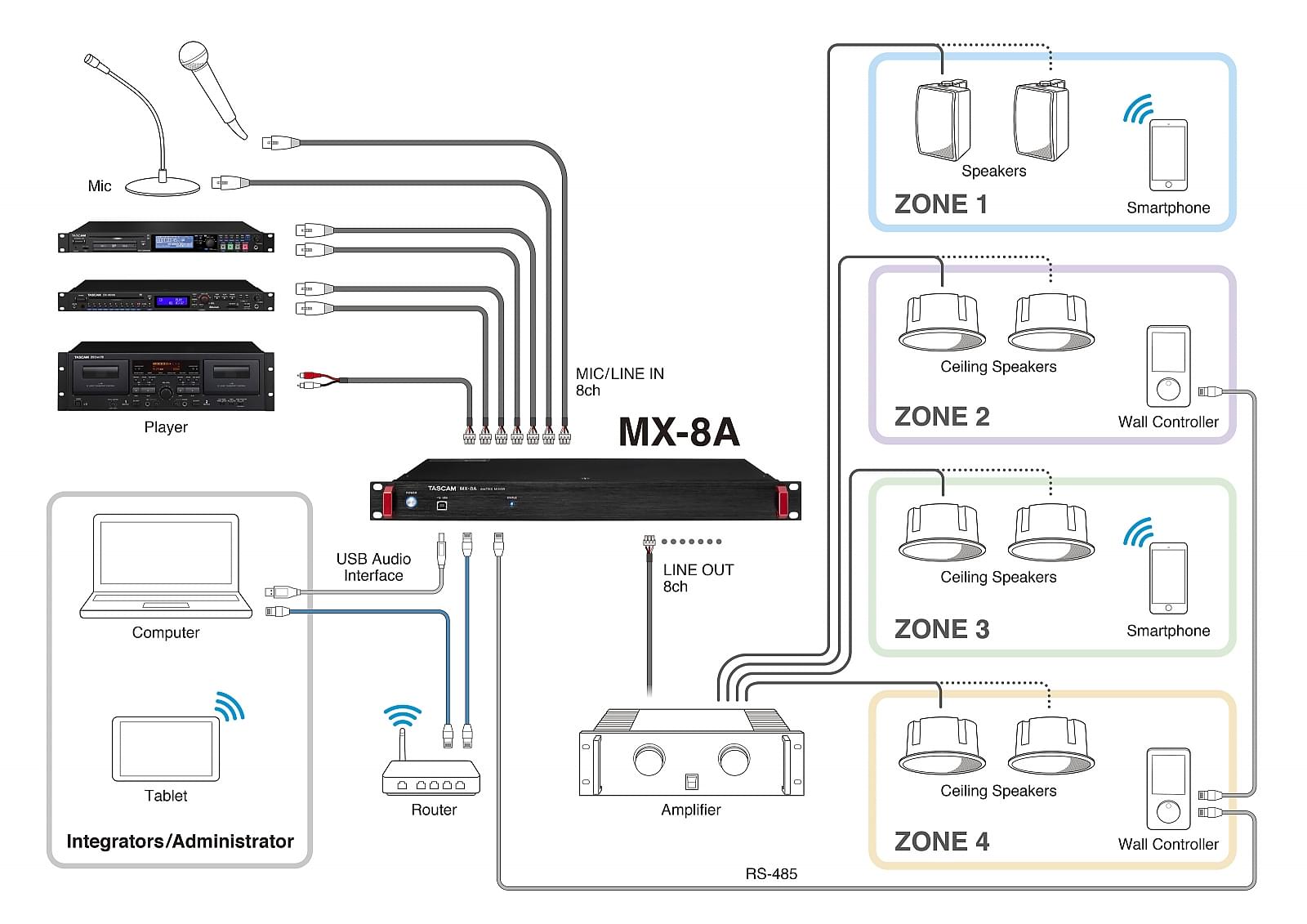
Key features of an 8 channel audio interface include multiple input options, high-quality preamps, and low-latency monitoring. Most audio interfaces come with a combination of XLR, TRS, and MIDI inputs, allowing you to connect a vast scope of instruments and equipment.
High-quality preamps are essential for capturing clean and precise sound, while low-latency monitoring ensures that you can hear the audio in real-time without any delay.
An 8 channel audio interface is a device that allows you to record up to eight individual sources simultaneously. It is perfect for recording a full band, as each instrument can be recorded on a separate channel.
This gives you the ability to mix and edit each track individually, resulting in a cleaner, more uniform and more professional sound.
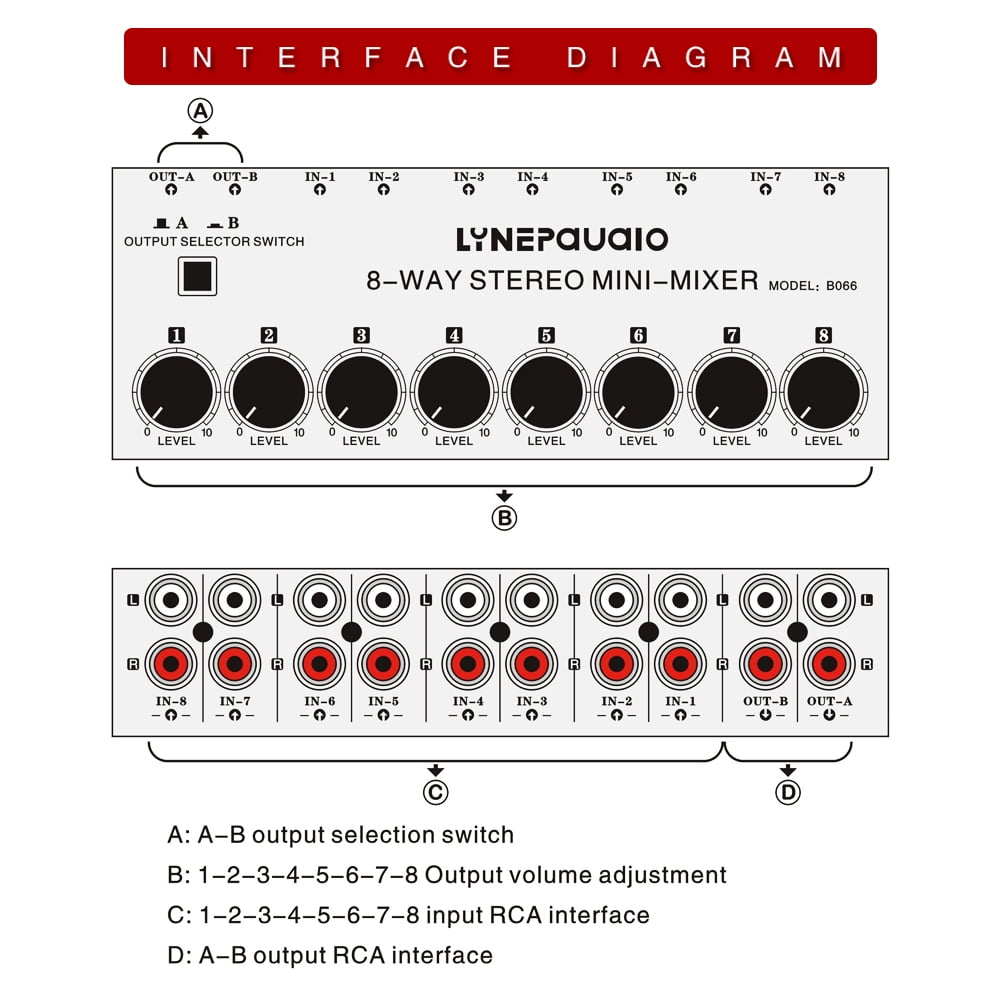
Using an 8 channel audio interface can obviously benefit your recording setup in many ways. It allows you to capture high-quality audio with minimal noise and distortion, resulting in a cleaner and more professional sound. Additionally, it gives you the flexibility to record a full band or multiple instruments simultaneously, which can save you time and effort in the mixing and editing process.
In conclusion, an 8 channel audio interface is an essential tool for any musician or producer looking to record high-quality audio. With its multiple input options, high-quality preamps, and low-latency monitoring, it can help you achieve a cleaner and more expert sound in your recordings.

Key Features Of 8 Channel Audio Interfaces
When it comes to recording audio, an 8 channel audio interface can be a potent device for those who need to capture multiple sources at once. Here are the key features to consider when choosing an 8 channel audio interface:
1. Inputs
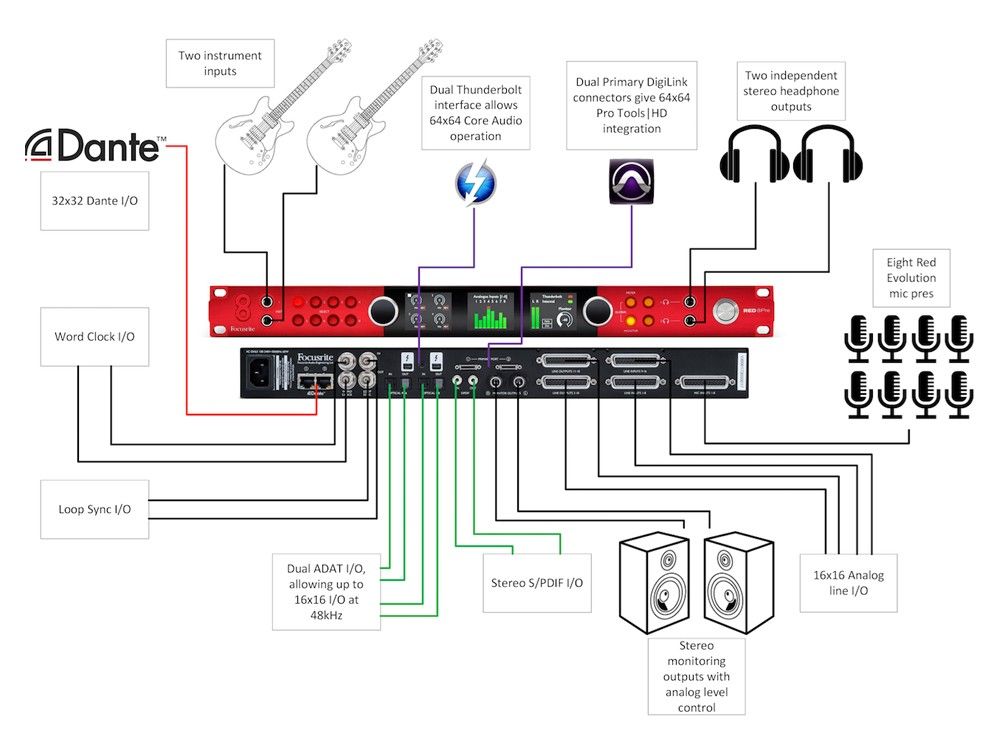
One of the most important features of an 8 channel audio interface is the number and type of inputs it offers.
Most 8 channel interfaces will have a combination of XLR and TRS inputs, which can accommodate a variety of microphones and instruments.
Some interfaces may also offer digital inputs, such as ADAT or S/PDIF, which can expand the number of channels available.
2. Outputs
In add-on to inputs, an 8 channel audio interface will also have a variety of outputs.
Which can be used to send audio to monitors, headphones, or other devices.
Look for an interface that offers enough outputs to accommodate your needs.
Consider whether you need balanced or unbalanced connections to accomplish the sound you aspire to achieve .
3. Sample Rate and Bit Depth

The sample rate and bit depth of an audio interface determine the quality of the audio it can seize.
Most 8 channel interfaces will support sample rates up to 192 kHz and bit depths up to 24 bits.
Which should be enough for most recording applications.
4. Preamps
Preamps in an audio interface are responsible for amplifying the signals from mics and instruments.
Look for an interface that offers high-quality preamps with low noise and plenty of headroom.
Which can help you capture clean, accurate recordings.
5. Compatibility

Finally, you gotta make sure that the 8 channel audio interface you choose is compatible with your computer and recording software.
Most interfaces will work with both Mac and PC computers, and many will also work with iOS devices.
Check the manufacturer’s website for compatibility information.
Make sure that any necessary drivers or software are available for download.
By considering these features, you can choose an 8 channel audio interface that meets your needs and helps you capture those high-quality recordings.
Comparison With Other Audio Interfaces
When it comes to choosing the right audio interface for your recording needs, it’s important to consider the number of channels you require. An 8 channel audio interface is a great option for those who need to record multiple instruments or microphones simultaneously, but isn’t always the answer for every session..
Let’s take a look at how 8 channel audio interfaces compare with other audio interfaces:
2 Channel Audio Interfaces
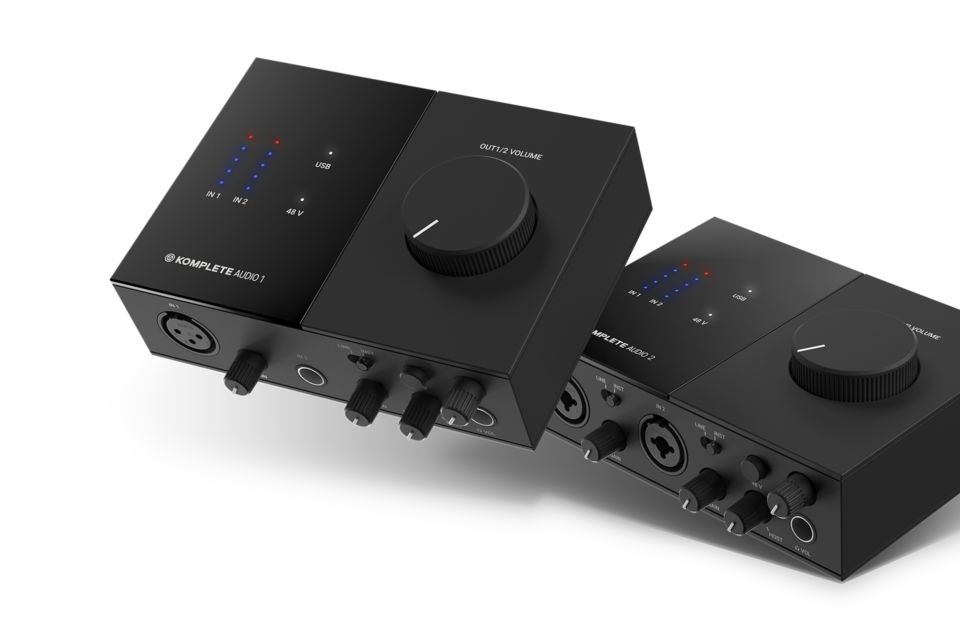
A 2 channel audio interface is a good option for those who only need to record one or two sources at a time.
So, if you plan on recording a full band or multiple instruments at once, an 8 channel audio interface is a better choice.
4 Channel Audio Interfaces
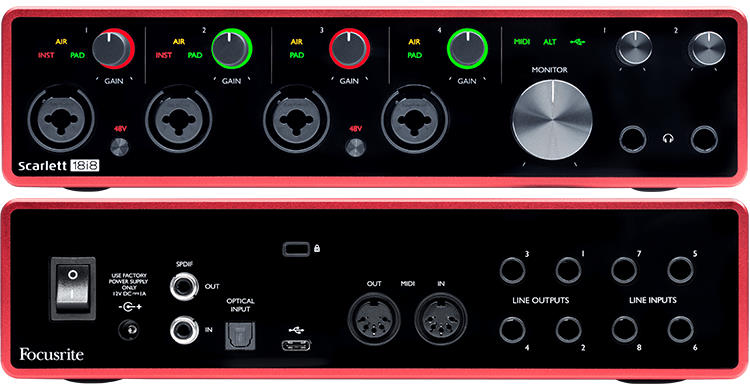
A 4 channel audio interface is a step up from a 2 channel interface, but still may not provide enough channels for larger recording sessions.
An 8 channel audio interface offers more flexibility and allows you to capture a wider range of sounds all at once.
16 Channel Audio Interfaces

A 16 channel audio interface is a popular option for larger recording sessions too, but may be overkill for smaller projects.
An 8 channel audio interface strikes a balance between flexibility and affordability, making it a popular choice for many home studios.
Overall, an 8 channel audio interface is an all-around practical choice for recording multiple sources simultaneously. With a wide range of options available on the market, it’s important to choose an interface that fits your specific needs and budget.
Choosing The Right 8 Channel Audio Interface
When you’re choosing an 8 channel audio interface, it is super important to consider several factors to ensure you get the best device for your recording needs. Below, we have highlighted some key factors to help you choose the right 8 channel audio interface for your recording needs.
Connectivity

Audio Quality
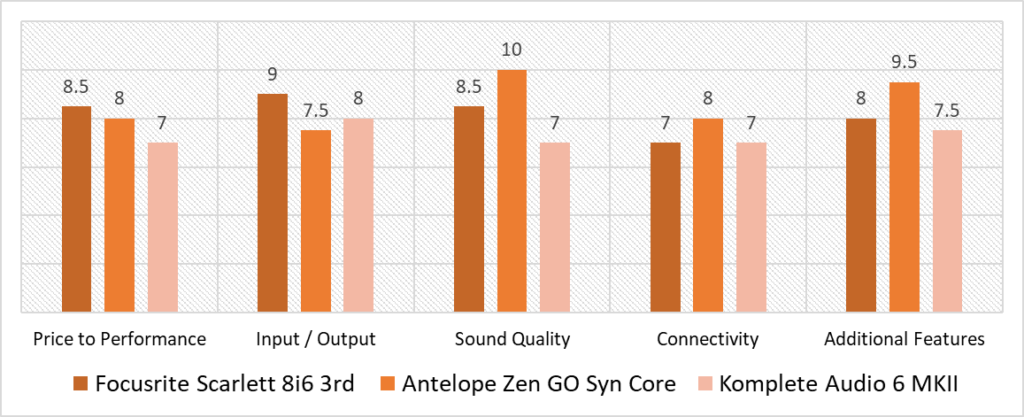
Budget

Brand Reputation
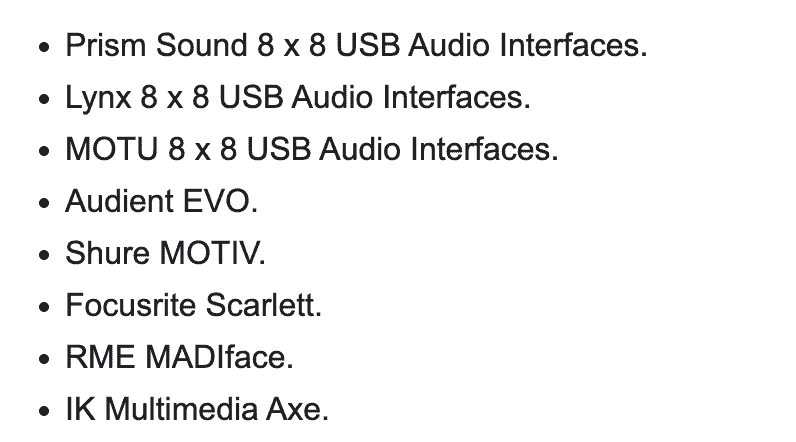
In conclusion, choosing the right 8 channel audio interface is crucial to ensure that you get the best recording quality. Consider the factors mentioned above, and you will be sure to find the perfect device for your recording needs.

Popular Brands & Models
When it comes to 8 channel audio interfaces, there are several popular brands and models that have gained a reputation for their quality and reliability. We have compiled a list of some of the most popular brands and models to help you make an informed decision.
Most popular option.
The all in one solution!
Budget friendly professional?
Comes with the software you need.
Overall, there are several popular brands and models to choose from when it comes to 8 channel audio interfaces. It is important to consider your specific needs and budget when making a decision.
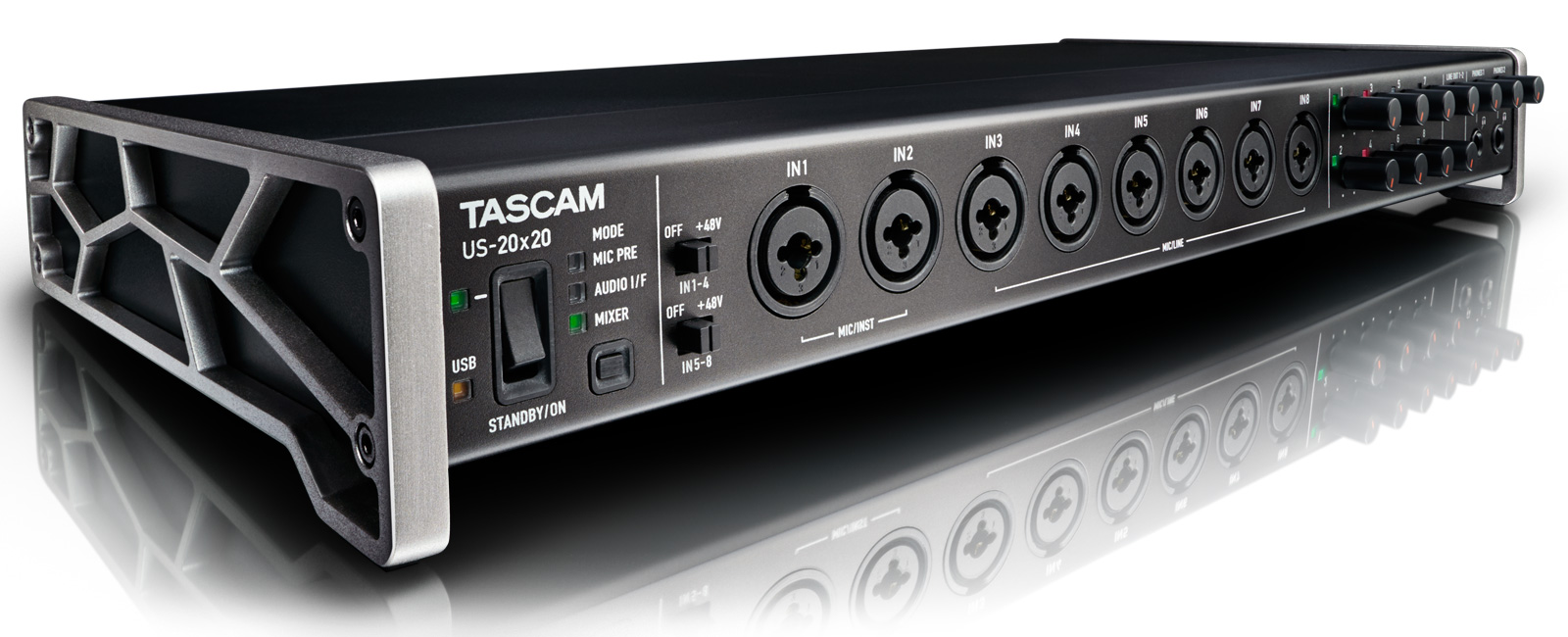
Installation and Setup
When it comes to installing and setting up an 8 channel audio interface, there are a few things to keep in mind. First, it’s important to make sure you have all the necessary cables and connectors. Most 8 channel audio interfaces will come with a USB or Thunderbolt cable for connecting to your computer, as well as XLR or TRS cables for connecting your microphones and instruments.

Once you have all the necessary cables, it’s time to install any drivers or software that may be required. Most 8 channel audio interfaces will come with a driver CD or a link to download the latest drivers from the manufacturer’s website. It’s important to install these drivers before connecting your audio interface to your computer, as this will ensure that the device is recognized and working properly.
After installing the drivers, you can connect your 8 channel audio interface to your computer using the provided USB or Thunderbolt cable. Once connected, you may need to adjust your computer’s audio settings to ensure that the audio interface is recognized as the default input and output device. This can typically be done through your computer’s sound settings or by opening your DAW and selecting the audio interface as the input and output device.

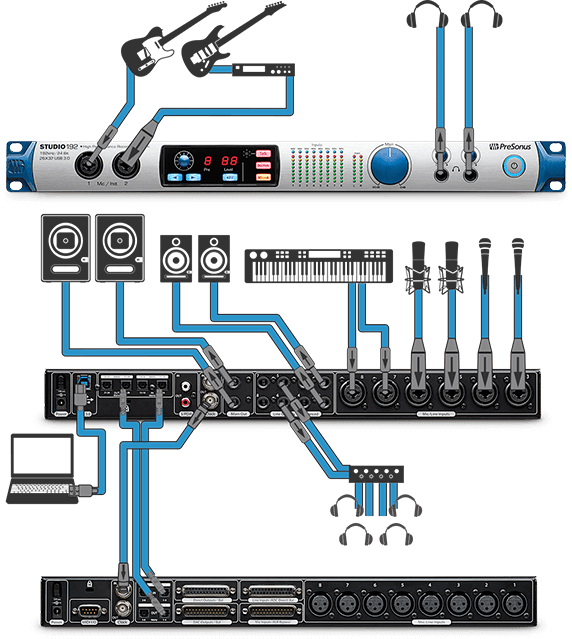
Finally, it’s time to connect your microphones and instruments to the audio interface.
Most 8 channel audio interfaces will have a combination of XLR and TRS inputs, as well as MIDI and other connectivity options.
It’s important to consult the manufacturer’s manual to ensure that you are connecting your devices to the correct inputs and using the appropriate cables.
By following these steps, you should be able to install and set up your 8 channel audio interface with ease. Remember to consult the manufacturer’s manual for any specific instructions or troubleshooting tips, and don’t hesitate to reach out to customer support if you encounter any issues.

Troubleshooting Common Issues
As with any audio equipment, there are some common issues that can arise when using an 8 channel audio interface. Here are a few troubleshooting tips to help you get your system back up and running.
Issue: No Sound
If you’re not getting any audio output from your 8 channel audio interface, there are a few things you can check. First, make sure that your speakers or headphones are properly connected to the interface. Check that the volume is turned up and that the mute button is not engaged. If you’re still not getting any sound, try the following:
- Check that your audio interface is properly connected to your computer and that the drivers are installed correctly.
- Make sure that your audio interface is selected as the default playback device in your computer’s sound settings.
- Check that the audio interface is not in standby mode or powered off.
Issue: Latency
Latency is the delay between when you play a note or sound and when you hear it through your speakers or headphones. This can be a frustrating issue for musicians and producers, but there are a few things you can do to reduce latency:
- Make sure that you’re using the latest drivers for your audio interface.
- Adjust the buffer size in your DAW or audio software. A larger buffer size can reduce latency, but it may also increase the risk of audio glitches and dropouts.
- Use a direct monitoring feature if your audio interface has one. This allows you to monitor your input signal directly, without going through your computer’s audio processing.
Issue: Connectivity
If you’re having trouble connecting your 8 channel audio interface to your computer or other equipment, there are a few things to check:
- Make sure that all cables are properly connected and that they’re in good condition.
- Check that you’re using the correct cables for your equipment. For example, make sure that you’re using balanced cables for long cable runs.
- Check that your audio interface is properly configured in your DAW or audio software. Make sure that the correct input and output channels are selected.
By following our troubleshooting tips, you should be able to resolve most common issues with your 8 channel audio interface. If you’re still having trouble, consult the manufacturer’s documentation, manual or contact their technical support team for further assistance.

Frequently Asked Questions
What are the benefits of an 8 channel audio interface?
An 8 channel audio interface is an essential piece of equipment for any home or professional recording studio. It allows you to record multiple tracks at once, which can save you a lot of time during the recording process. With an 8 channel audio interface, you can capture a full band performance or record multiple instruments simultaneously. This means you can produce high-quality recordings with ease.
How does an 8 channel audio interface differ from a 4 or 6 channel interface?
An 8 channel audio interface differs from a 4 or 6 channel interface in terms of the number of inputs and outputs it has. An 8 channel audio interface typically has 8 XLR/TRS inputs and 8 TRS outputs, while a 4 or 6 channel interface has fewer inputs and outputs. This means that an 8 channel audio interface can accommodate more instruments or microphones at once, which is particularly useful for recording a full band.
What are some recommended budget-friendly 8 channel audio interfaces?
If you’re on a budget, there are several budget-friendly 8 channel audio interfaces that you can consider. Some of our recommendations include the Behringer U-PHORIA UMC1820, the PreSonus Studio 1810c, and the TASCAM US-16×08. These interfaces offer a good balance of features and affordability, making them a great choice for home studios or small recording projects.
What are some popular 8 channel audio interface brands?
There are several popular 8 channel audio interface brands that you can consider. Some of the most well-known brands include Focusrite, PreSonus, Behringer, and MOTU. These brands offer a wide range of interfaces with different features and price points, so you can choose the one that best suits your needs and budget.








